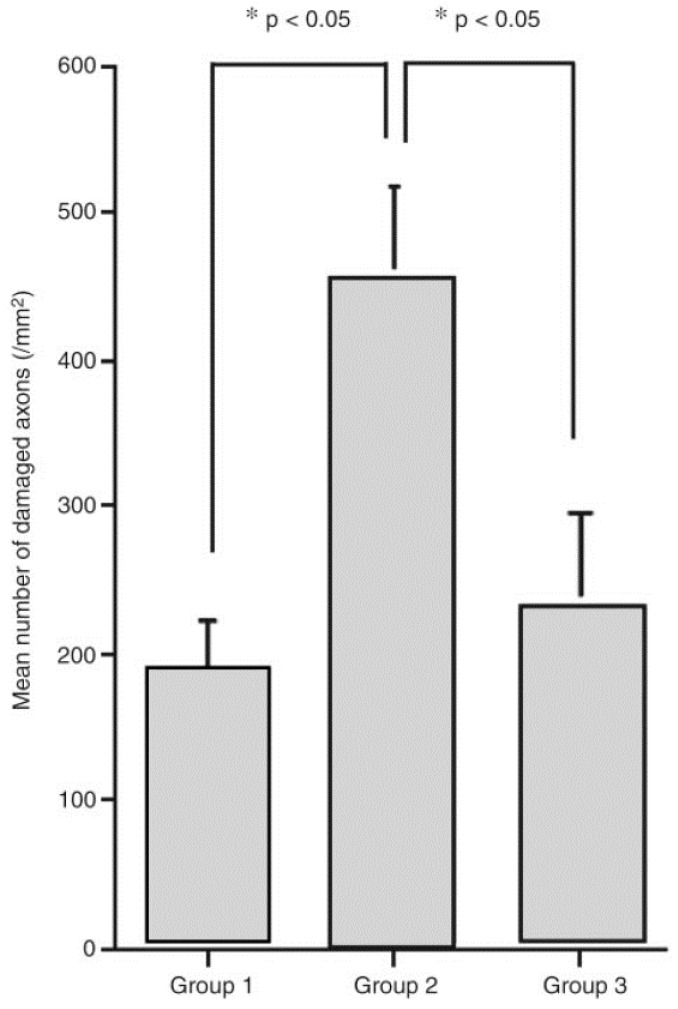Figure 6.
This bar graph shows a comparison of the numbers of amyloid precursor protein (APP) immunoreactive axonal profiles in the pontomedullary junction in three different treatment groups. Group 1 animals were subjected to traumatic brain injury (TBI) followed by 1 h of hypothermia and slow rewarming. In contrast, Group 2 animals were subjected to TBI and the same hypothermic intervention followed by rapid rewarming. Group 3 animals were also subjected to TBI followed by hypothermia and rapid rewarming with the concomitant infusion of cyclosporine A (CsA). Note that Group 1 animals showed a reduced burden of axonal damage associated with the use of hypothermia and slow rewarming, whereas these axonal numbers were dramatically increased following the same insult and hypothermic intervention, now with the inclusion of a rapid rewarming rate. Lastly, Group 3 was treated in the same fashion as Group 2, with the exception that CsA was administered prior to the initiation of rapid rewarming. Collectively, this figure illustrates the damaging effects of rapid posthypothermic rewarming and its attenuation via the use of the immunophilin ligand CsA. Reprinted with permission from [152], copyright Mary Ann Liebert, Inc., 2009.

